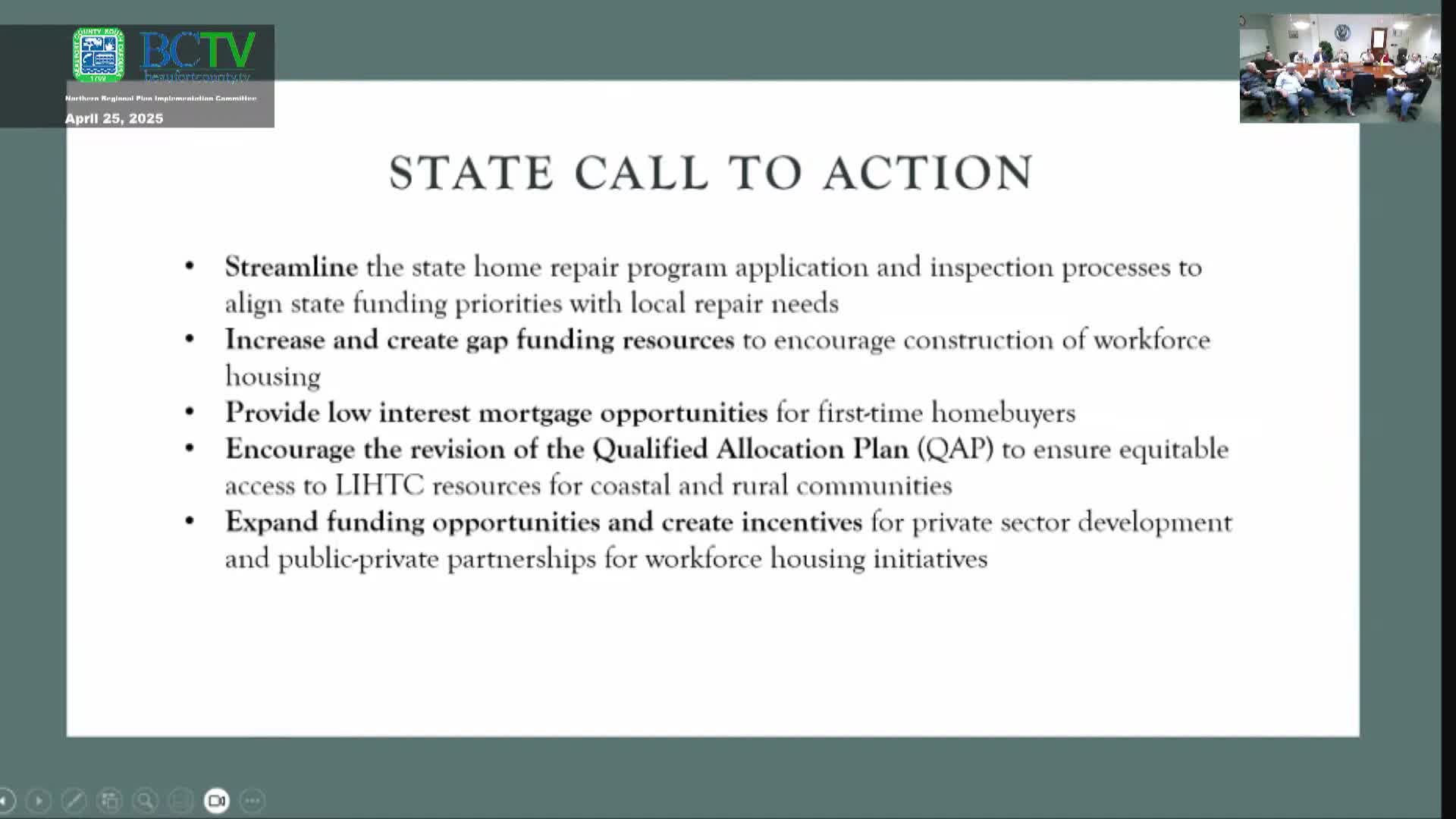Local Leaders Propose Revisions to Low Income Housing Tax Credit Program
April 26, 2025 | Beaufort County, South Carolina
This article was created by AI summarizing key points discussed. AI makes mistakes, so for full details and context, please refer to the video of the full meeting. Please report any errors so we can fix them. Report an error »

The Beaufort County Northern Regional Plan Implementation Committee meeting on April 25, 2025, spotlighted the urgent need for revisions to the local qualified allocation plan, with a strong emphasis on fostering private sector development in the area. Committee members voiced concerns that state-level decision-makers in Columbia lack a clear understanding of local needs, urging for more autonomy to address these issues directly.
A key discussion point was the necessity to create incentives for private investment, particularly through the low-income housing tax credit program. This initiative is seen as vital for attracting developers, with two projects expected to be completed by the end of the year. The committee highlighted the increasing interest from major financial institutions, like JPMorgan Chase, in establishing workforce housing platforms in Beaufort County, driven by the region's rapid growth and national attention.
Luis, a committee member, called for collaboration with local jurisdictions to streamline policy changes and reduce regulatory hurdles that hinder development. He emphasized the importance of expanding infrastructure access and lowering costs, as developers often express concerns about high fees and capacity issues.
The meeting concluded with a call to build public support for development initiatives, recognizing that overcoming community resistance is essential for progress. The committee aims to engage in ongoing conversations to ease the burden on developers and facilitate the construction of new housing, ultimately benefiting families in the region.
A key discussion point was the necessity to create incentives for private investment, particularly through the low-income housing tax credit program. This initiative is seen as vital for attracting developers, with two projects expected to be completed by the end of the year. The committee highlighted the increasing interest from major financial institutions, like JPMorgan Chase, in establishing workforce housing platforms in Beaufort County, driven by the region's rapid growth and national attention.
Luis, a committee member, called for collaboration with local jurisdictions to streamline policy changes and reduce regulatory hurdles that hinder development. He emphasized the importance of expanding infrastructure access and lowering costs, as developers often express concerns about high fees and capacity issues.
The meeting concluded with a call to build public support for development initiatives, recognizing that overcoming community resistance is essential for progress. The committee aims to engage in ongoing conversations to ease the burden on developers and facilitate the construction of new housing, ultimately benefiting families in the region.
View full meeting
This article is based on a recent meeting—watch the full video and explore the complete transcript for deeper insights into the discussion.
View full meeting